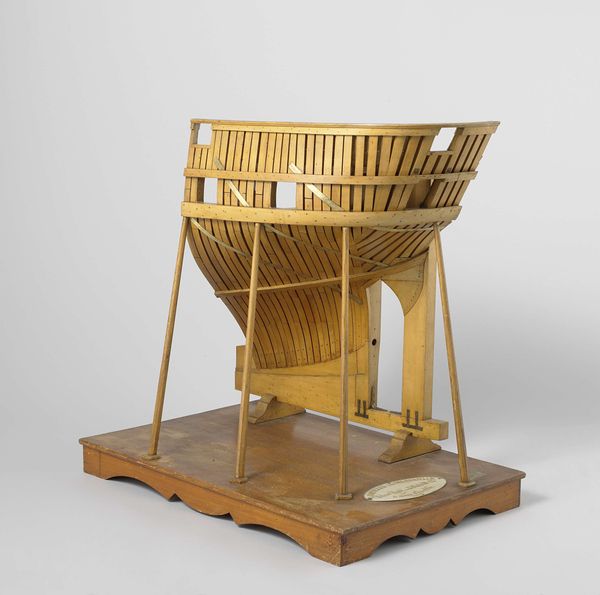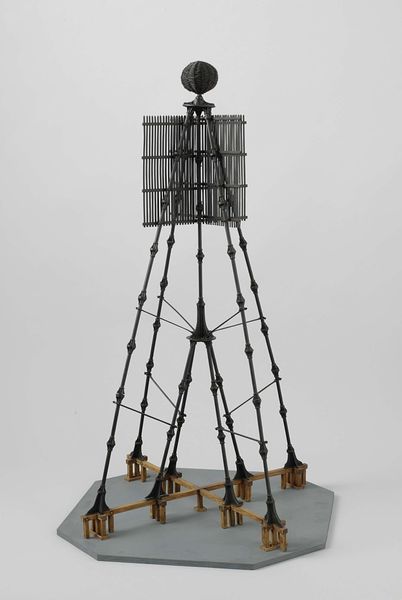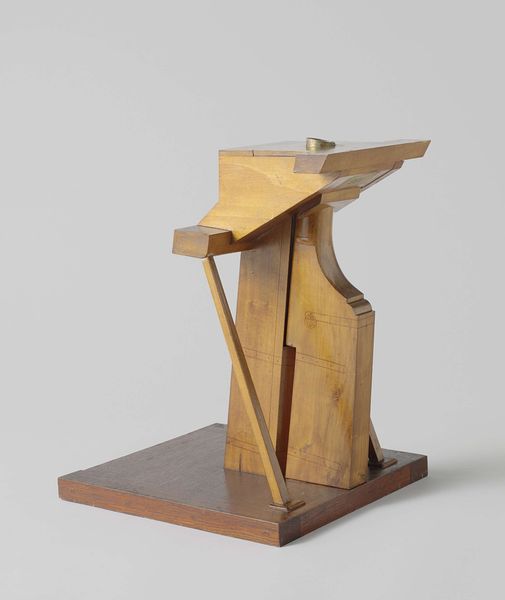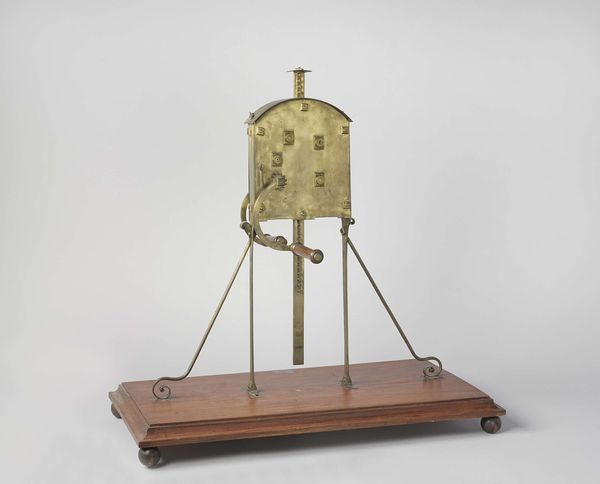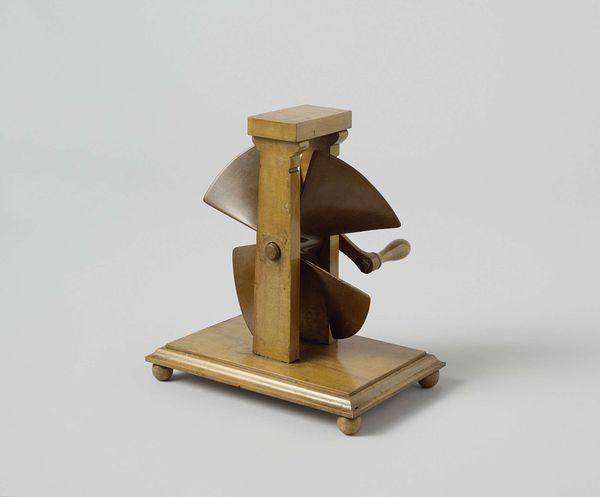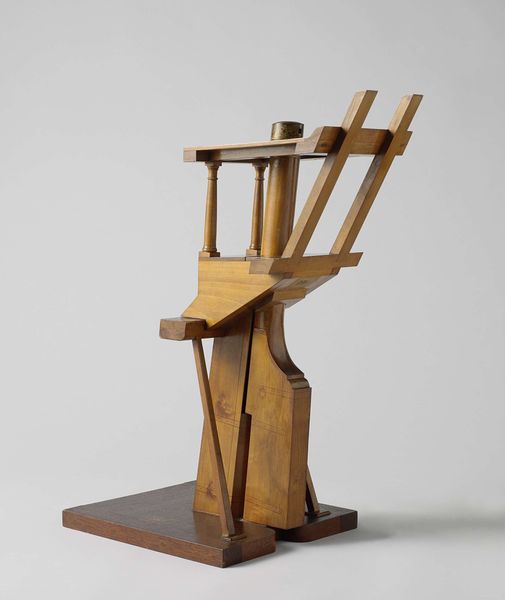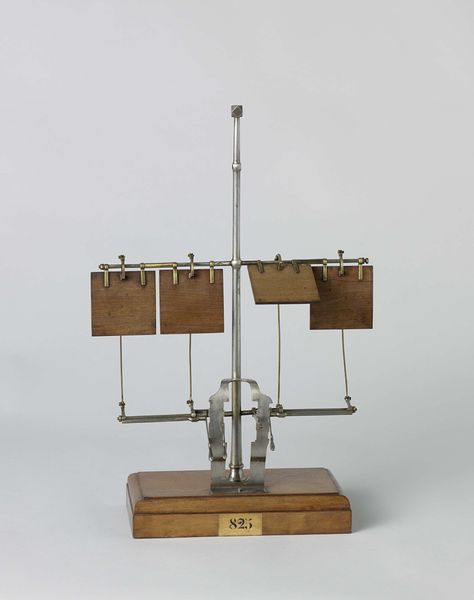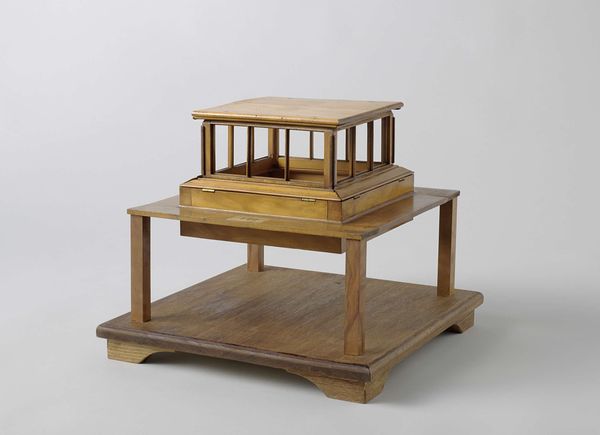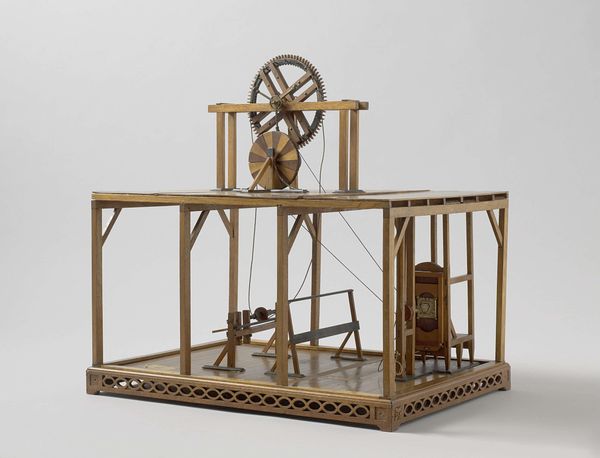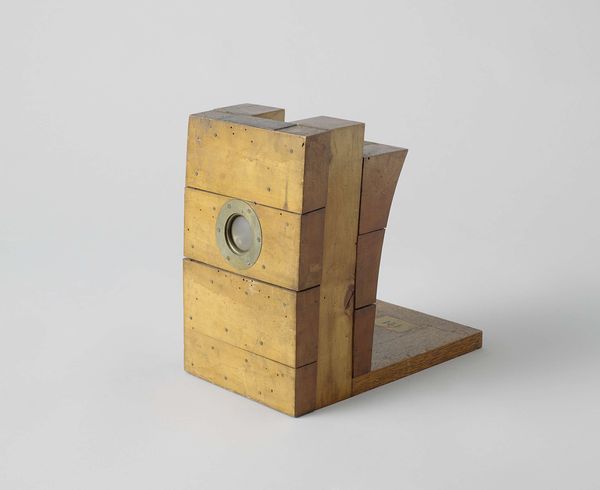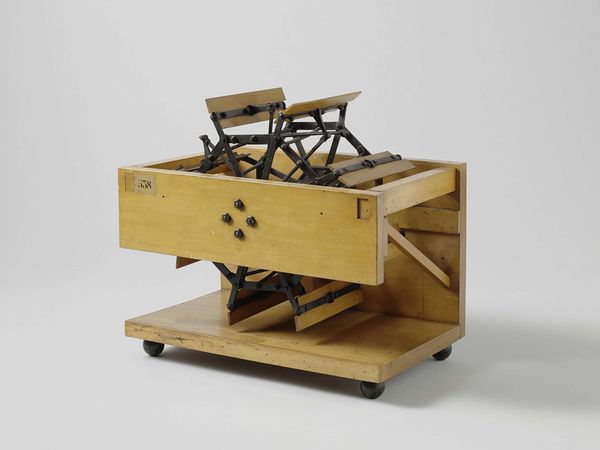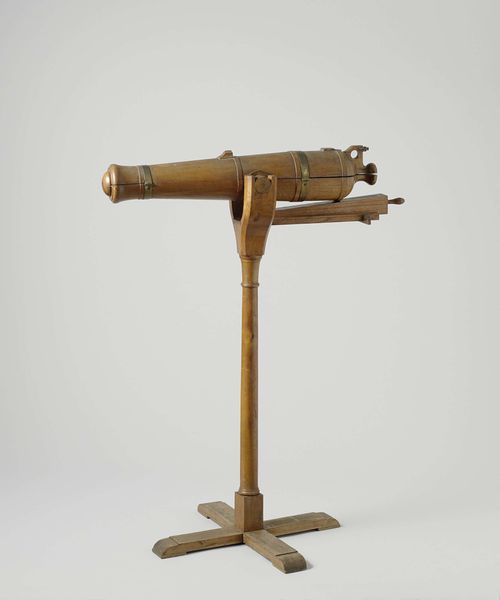
metal, sculpture, architecture
#
metal
#
architecture mock-up
#
form
#
prop product design
#
geometric
#
sculpture
#
architecture model
#
line
#
prototype of a building
#
mechanical engineering model
#
architecture
Dimensions: model height 52 cm, model width 40 cm, model depth 38.7 cm, packaging capsule height 55 cm, packaging capsule width 43.5 cm, packaging capsule depth 44 cm
Copyright: Rijks Museum: Open Domain
Editor: We're looking at "Model of a Light Beacon," circa 1866, by Enthoven & Co. It's rendered in metal. It feels so precise, like a technical drawing come to life in three dimensions. What stands out to you about this piece? Curator: It’s the materiality that grabs me first. Forget the idea of pure artistic vision; this is about metal, process, and the labor involved in shaping it. Look at the rivets, the joints—each one a testament to practical skills and industrial production. Editor: So, less about aesthetics and more about… making? Curator: Precisely! This isn't just some artistic rendering. It’s a miniature, a prototype almost. Consider the social context. Mid-19th century was a boom time for infrastructure, and beacons meant safer trade routes. Enthoven & Co. weren't artists in the traditional sense; they were facilitators of industry, working with their hands. What kind of labour do you think produced that ladder? Was it piecemeal manufacturing, or some new assembly line? Editor: That puts it in a whole new light. I was initially seeing a sculptural object, but now I'm considering the production line. Curator: Good. Also note the base, how the materials themselves contribute to the overall effect, elevating its function beyond mere representation. We need to look at what purpose this model actually serves, and what the relationship is between art and architecture in an era of imperialistic trade. It’s about the fusion of art, labour, and the burgeoning world of manufacturing. Editor: I didn't realize there were so many layers to something that seemed so straightforward. It highlights how even a "simple" model reflects complex industrial systems. Curator: Exactly. Art, here, is a material product of those systems. Hopefully, we can consider where architecture stands between a trade, art, and commodity.
Comments
No comments
Be the first to comment and join the conversation on the ultimate creative platform.

